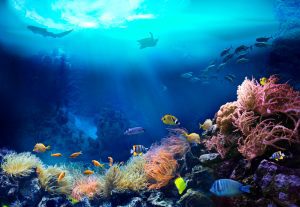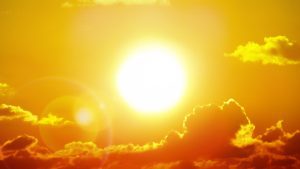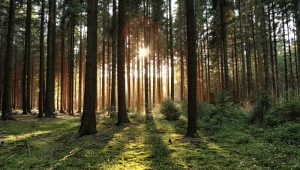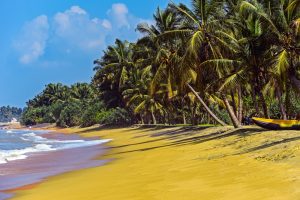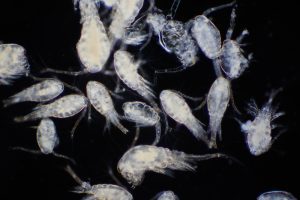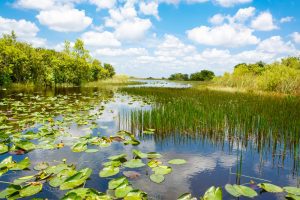The rainforest covers approximately 2% of the Earth’s total surface but contains 50% of Earth’s animals, plants, insects, and microorganisms.
The rainforest is probably difficult to beat in terms of biodiversity in ecosystems, and many biotic factors can be found in it. In all cases, “biotic” refers to something living within an ecosystem.
There are four biotic rainforest factors, one of which is plants. A hectare of tropical rainforest can contain over 800 species of trees on the ground and more than 1,500 species higher up.
Animals are consumers are another biotic factor and are dependent on producers for some of their food. However, they also eat other consumers. Microorganisms and insects make up the third and fourth rainforest biotic factors.
Table of Contents
The biotic factor of rainforest plants
This ecosystem is unique because of the diversity and importance of the plants found within it. The rainforest practically waters itself – plants discharge water through transpiration.
This water then becomes heavy, rain-laden clouds, producing rain and keeping the rainforest damp and muggy.
While more than 2,000 rainforest plants have anti-cancer properties, less than 1% of them have been tested for medicinal value. Together, rainforest plants make up over a third of all the species.
Furthermore, rainforest plants provide important products such as timber, coffee, and beautiful flower blooms like orchids.
The biotic factor of rainforest animals
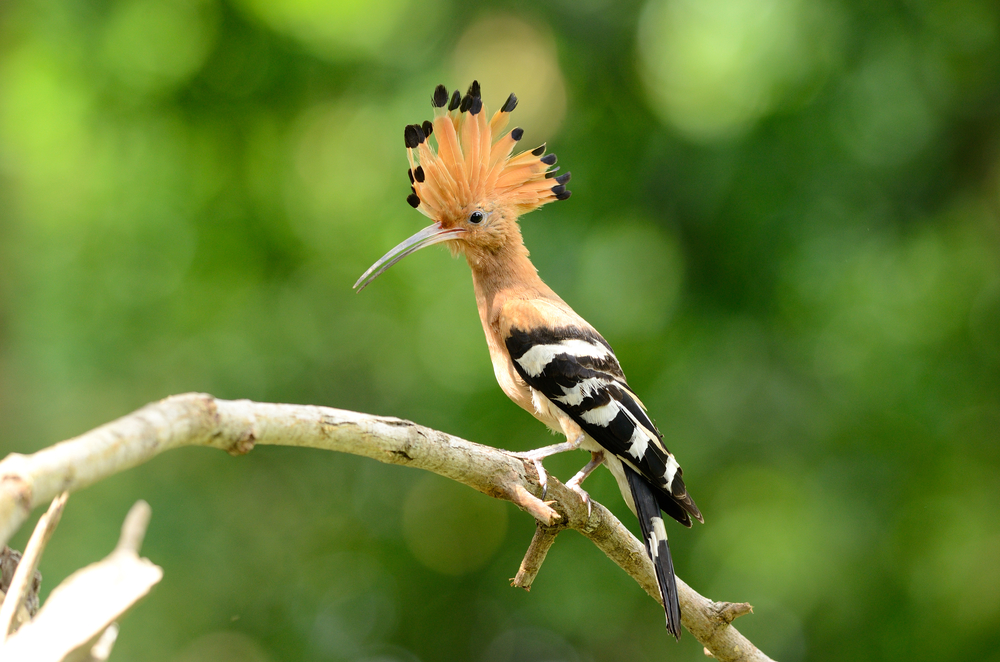
Being one of the world’s oldest ecosystems, rainforests have many species of animals. A four-mile area of rainforest can support 400 species of birds and 150 butterflies.
Some rainforest animals are still unknown and have yet to be named.
Rainforests have temperatures of 75–80°F all year, so animals don’t have to worry about staying warm or finding enough food. Over 50 million of the species found in rainforests are invertebrates.
The rainforest species include poison dart snakes, parrots, toucans, beetles, and butterflies, to name but a few.
The biotic factor of rainforest microorganisms and fungi
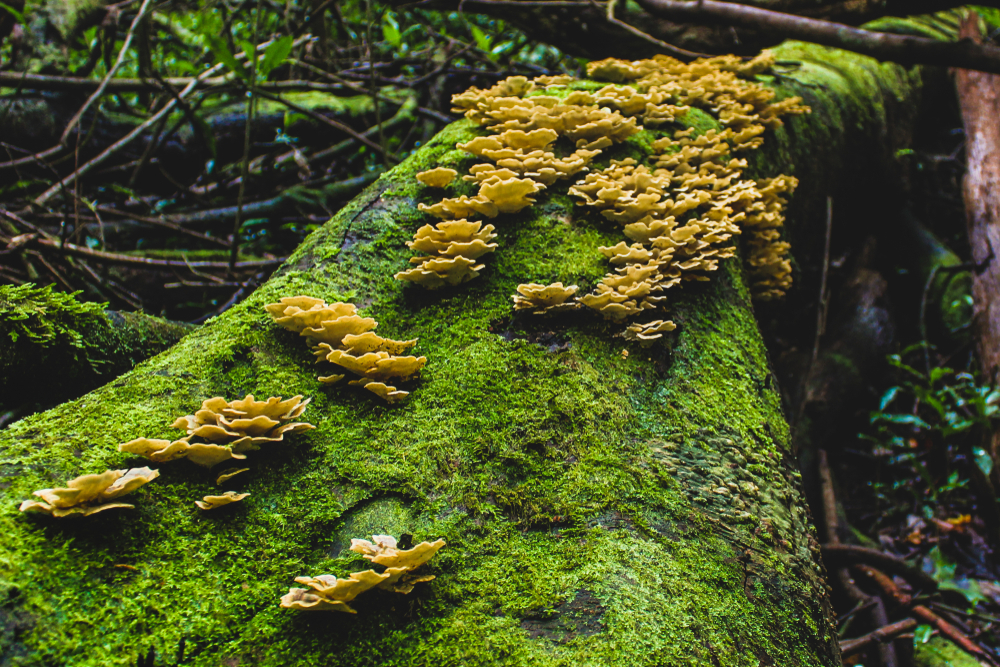
In the rainforest ecosystem, fungi and microorganisms carry out similar roles, such as providing food by decomposing dead things.
The forest floor’s inanimate organic matter would not be able to decompose at an acceptable rate, and plants wouldn’t have the nutrients they require without microorganisms and fungi.
Microorganisms and fungi ensure that the forest floor’s decay occurs at an appropriate rate to replenish soil nutrients.
Microorganisms aid digestion in rainforest animals and fungi provide food for invertebrates like ants and beetles.
The biotic work of rainforest microorganisms
The scale of microbial processes is amazing. The floor of the rainforest is home to many different types of decomposers, such as bacteria, fungi, and termites.
These organisms absorb nutrients from the forest floor’s organic matter (leaves, wood, dung, and carcasses).
It only takes a few minutes for different species of insects to find a pile of dung, even in the most naturally protected areas. Feces are used by insects to provide calcium salts and energy.
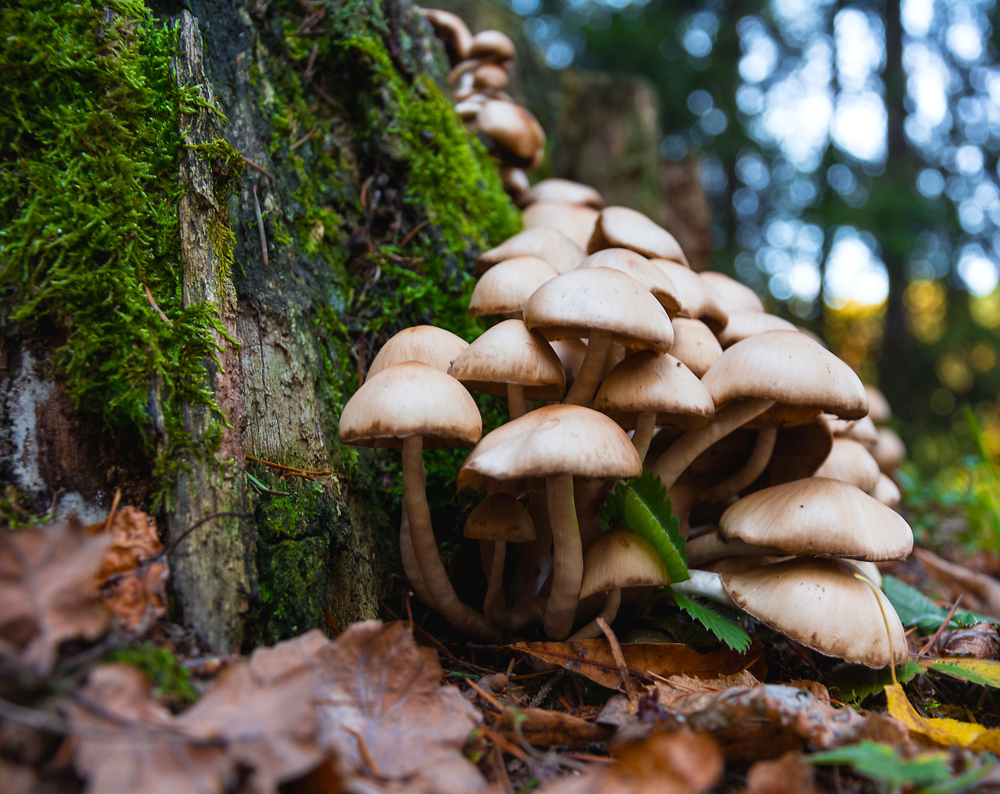
Mycorrhizae fungi also aid in this process. Plants and fungi form a relationship that is mutually valuable. Mycorrhizae attach themselves to the roots of plants and aid in the assimilation of nutrients from a wider range.
Fungi and plants produce starch and sugars, from which, in turn, both profit. Mycorrhizae are thought to aid in drought and/or disease resistance.
How rainforest microorganisms keep the soil healthy
The rainforest’s vegetation and dead wood contain the most carbon and nutrients in the ecosystem. A rainforest’s floor is so full of organic matter that it doesn’t take very long for nutrients to decay and enter back into the soil.
The soil becomes almost sterile as a result. Although it might seem odd that sterile soils produce the lushest vegetation, the secret to this abundance of foliage is the microorganisms on the forest floor.
They constantly recycle nutrients through leaf litter, animal feces, and deadwood.
The biotic factor of rainforest insects
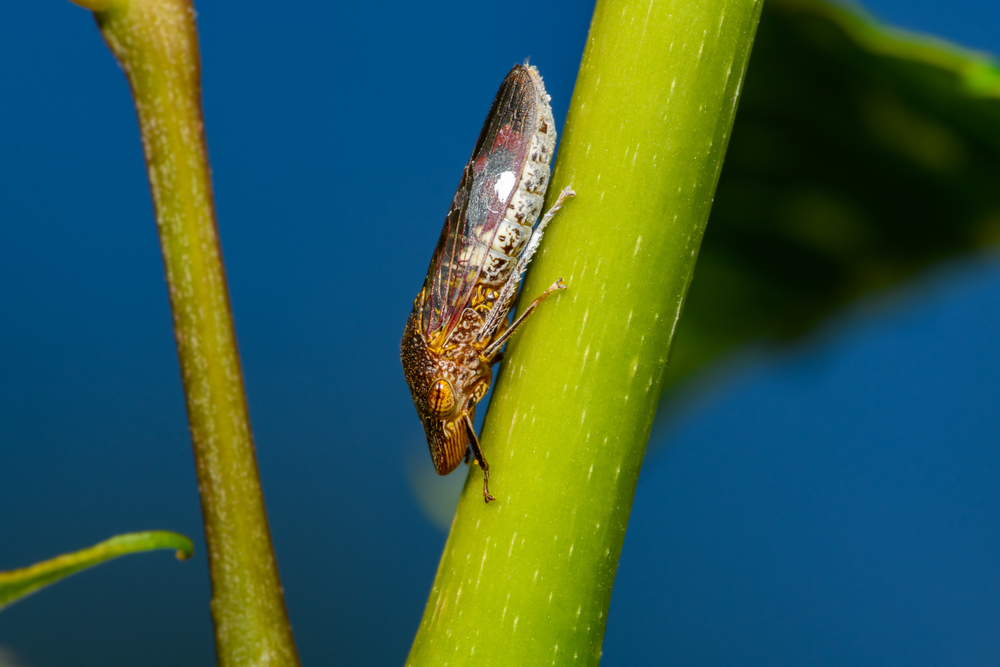
Around 10 million species of insects could exist on Earth, and many of them live in tropical forests. Although ants are the most common insect in rainforests, there is a wide variety of other species.
These range from tiny wasps named Mymaridae (fairy flies) to large rainforest insects such as goliath and titan beetles. The largest diversity is found in beetles, including more than 370 thousand species.
Oecophylla langinoda (African weaver ant) is the dominant ant species in a large portion of tropical Africa. Their weaving behavior is reflected in their common name.
Their silk-exuding larvae are used as living glue guns, gluing leaves to hollow balls. They build small, leafy barracks to mark territory boundaries and spread their nests through the trees.
The ants first join the leaves by pulling them together, while other larvae are held in place and move back and forth, gluing the edges.
African weaver ants are aggressive and territorial. They hunt many insects and farm them in trees to provide carbohydrates. O. smaragdina, another weaver ant species, live in tropical Australasia.
The rainforest: analyzed as an ecosystem of cooperating biotic factors
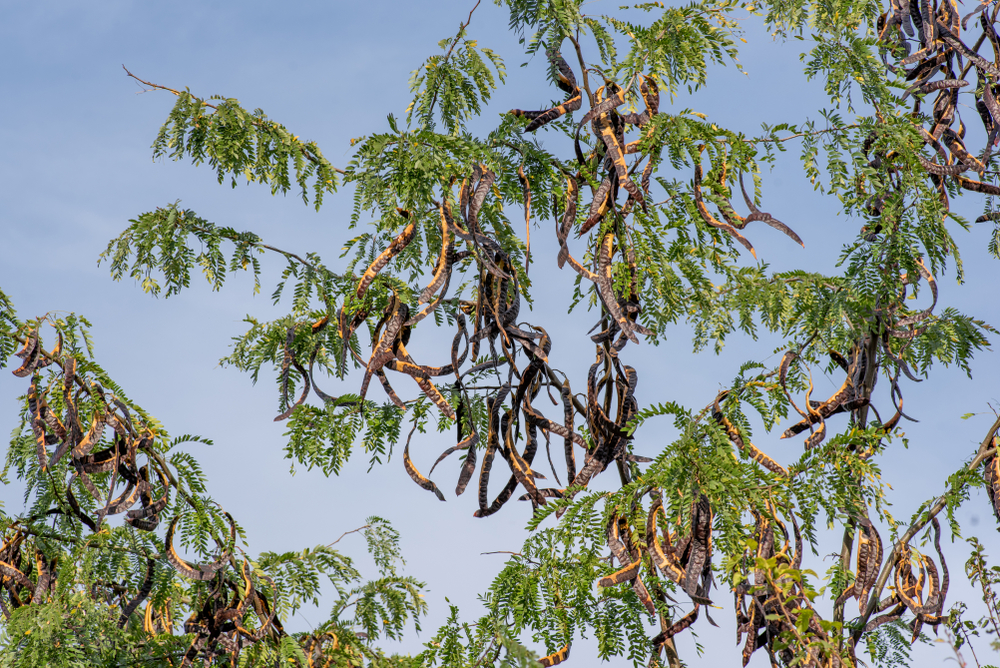
For survival, species in the rainforest ecosystem depend on one another. Swollen Thorn Acacia trees are home to Azteca Ants, for example. The trees provide the ants with shelter and food.
In turn, ants protect the trees from predators by fighting off intruders and keeping other plants from growing around them.
Rainforest animals have many features that enable them to eat plants that are unavailable to other animals. Toucans, for example, have strong, long beaks that allow them to eat nuts that smaller birds cannot.
Fruit trees depend on animals to eat fruits and spread their seeds through droppings.
A detailed look at biotic factors
Biotic Factors are any living organisms that create, shape, or support the environment. These are the most important parts of an ecosystem.
These are living organisms dependent on other factors – some living and some not – for their survival. Here, the reference is to living things such as plants, animals, and microorganisms.
Some invasive species pose great dangers and threats to the ecosystem. The imbalance they create in the ecosystem can be massively disruptive.
For a balanced ecosystem, interaction, cooperation, and competition are essential.

Abiotic factors, on the other hand, are inanimate artifacts, things, and conditions such as temperature, sunlight, and chemistry that are present in an ecosystem.
A detailed look at different kinds of biotic factors
Different groups and categories can be divided depending on the ecosystem and different living organisms. Biotic factors can be further divided into three categories: consumers, producers, and decomposers.
What is the biotic factor “producer”?
“Autotroph” is a Greek term that means “self-food.” Autotrophs are commonly called producers. They are independent of other organisms and make their own food.
They don’t rely on other life forms for survival. The producers are the lifeblood of any ecology. Again, the producers can be further subdivided into two groups discussed below.
What is the biotic factor “consumer”?
These are also called heterotrophs. “Heterotroph” is a Greek term that means “other food.” To obtain food and energy, they rely on other living organisms. Their main source of energy is autotrophs.
They must eat other living organisms to survive. They sometimes form a symbiosis with other organisms.
There are several kinds of consumers, including omnivores, carnivores, and herbivores. Animals that eat green plants and trees are called herbivores.
Carnivores, on the other hand, are creatures that feed on herbivores. Omnivores are creatures that eat plants and animals.
What is the biotic factor “decomposer”?
They are also called detritivores. They feed on producers and consumers and break down leftover materials into simpler forms. They are not carnivores, however.
The decomposers are completely different from carnivores. Carnivores eat living organisms, while decomposers eat only dead things.
The decomposers eat all the waste and rotten material of dead organisms. Detritivores also gain more energy by turning the waste and rotten materials into metabolic food.
These decomposed foods are also eaten by heterotrophs (consumers).
How can dead organisms and rotten material be turned into food for the body? This is possible through composting. The process of composting is where plants and animals’ waste materials are gathered together.
Decomposers such as bacteria, algae, fungi, and other microorganisms eat them and make rich fertilizers. Some of these materials can be used to harvest good crops.
In other circumstances, the autotrophs consume these fertilizers, producing food. The cycle is repeated in reverse order: producers, consumers, and decomposers.
This is the entire ecosystem process, including the biotic factors, in a rainforest.
Two seldom-discussed types of biotic factors
As mentioned above, producers can be further subdivided into two groups.
What is the biotic factor “chemoautotrophs”?
These are rare in the ecosystem. They produce energy from chemicals in the environment. Methanogens, for example, are microorganisms that produce methane, one of the most damaging greenhouse gases.
What is the biotic factor “photoautotrophs”?
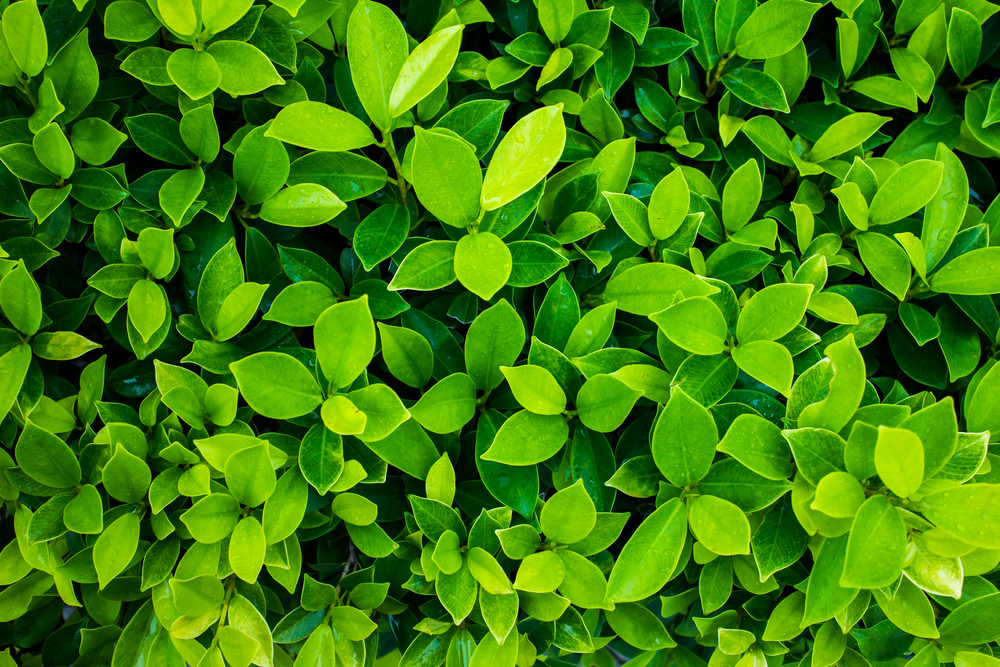
Photoautotrophs are plants and trees that can grow green. They manufacture their own food by absorbing the sun’s rays. These photoautotrophs account for the majority of living organisms in the ecosystem.
The leaves of plants contain a pigment called chlorophyll that captures the photons from sunlight and produces energy.
This energy can be used to make sugars, proteins, lipids, and so forth for the consumption of plants. Photoautotrops also grow vegetables and fruits that can make food for consumers, so they are food producers for all living organisms.
Multicellular and complex green plants are highly efficient at producing fuel and building materials. Photoautotrophs, the food producers for the entire ecosystem, are the bottommost layer in the energy pyramid.
A synopsis of essential points to remember about biotic factors
- Biotic factors refer to living organisms that create, shape, and build the environment.
- It includes every living organism that depends on other living things for survival.
- Interaction, cooperation, and competition are key elements for a balanced ecosystem.
- Producers, consumers, and decomposers form the three types of standard biotic factors.
- Producers are responsible for providing food for the ecosystem and their own consumption.
- Consumers eat other living organisms as food. There are many types of consumers, such as herbivores, carnivores, and omnivores.
- Animals that eat the leaves of trees or green plants are called herbivores.
- Carnivores are organisms that eat herbivores.
- Omnivores are animals that eat herbivores or carnivores.
- Decomposers are people who feed on producers and consumers. They break down leftover substances into simpler materials.
- Biotic factors can be described as green plants, trees, animals, humans, and microorganisms.
A quick look at rainforests
The tropical rainforest is an area of biome (a major or worldwide biotic community) that can be found on the ground on or around the equator.
It is home to the greatest biodiversity among all Earth’s ecosystems. Rainforests include flora, fauna, and microbes.
The optimal conditions for growing at equatorial sites are abundant rainfall, warm temperatures, and intense sunlight. In part, this explains why there is so much diversity in rainforests.
Being at or near the equator, rainforests are not subject to seasonality (meaning that they are always green). This means that the native flora has developed flowering and fruiting seasons.
The rainforest is a vital ecosystem for nutrient cycling. The thick canopy layer that blocks sunlight makes it difficult for the rainforest’s lower levels to receive sufficient sunlight.
The forest floor is dark and moist, making it a perfect environment for decomposition. Because microbes are the driving force behind nutrient cycling, they are crucial to the survival of this ecosystem.
Rainforests are not fertile because of the richness of their soil. Rather, rainforests’ soils are actually quite poor in nutrients. This is where decomposition takes place.
Luckily, rainforests are home to a huge array of microorganisms such as bacteria, fungi, and even protozoa, in all shapes and sizes.
The thick layer of leaf litter that is constantly present on the forest floor and the presence of a wide variety of bacteria and fungi is what powers this ecosystem’s recycling.
Tropical rainforests
The Tropic of Cancer and Capricorn, and all points in-between, are the common locations for tropical rainforests. They are usually warm and humid all year.
The regions with tropical rainforest growth are Brazil, northern South America, and West Central Africa.
Temperate rainforests
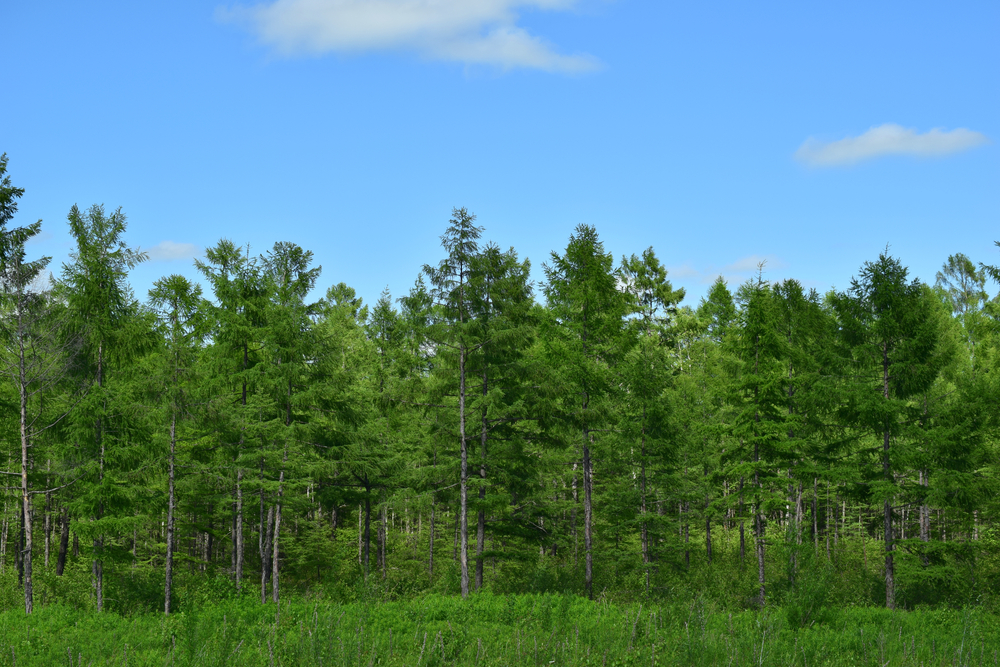
There are many regions with temperate rainforests around the globe, including the Pacific Coast of America and Canada and various regions in Europe, Russia, and Eastern Asia.
They are more temperate than tropical rainforests and can withstand a wider temperature range. Temperate rainforests have more coniferous trees like redwoods, pines, and firs.
On the other hand, tropical rainforests tend to have more broad-leaved trees, such as Banana, Cathedral Fig, Giant Red Cedar, Kapok, and Hevea brasiliensis (rubber tree).
So, what are the biotic factors of a rainforest?
Any living thing in the rainforest is a biotic factor. This includes plants, animals, fungi, and microorganisms. These should not be confused with non-living abiotic factors.
All biotic factors (except for humans, who often have a horrible effect on the rainforest) contribute to the health of the rainforest one way or another.



